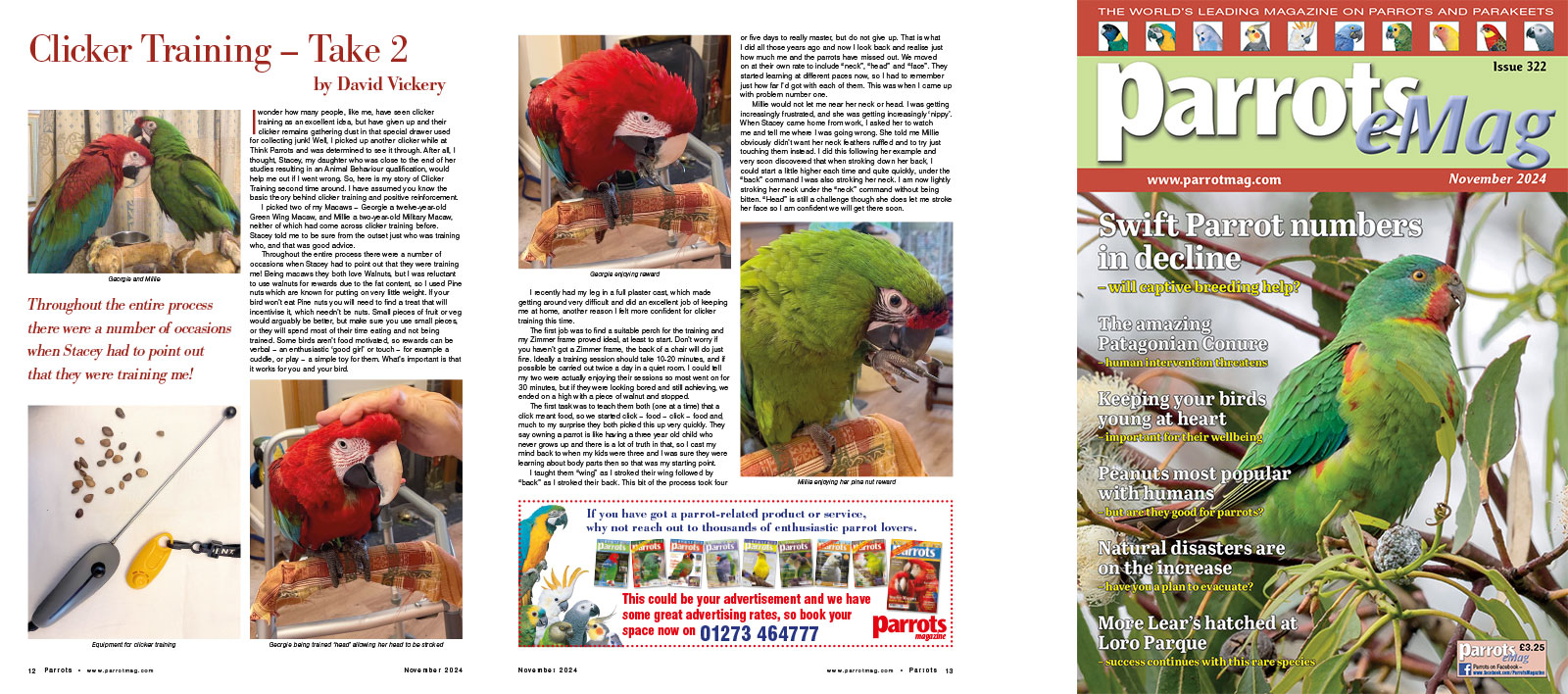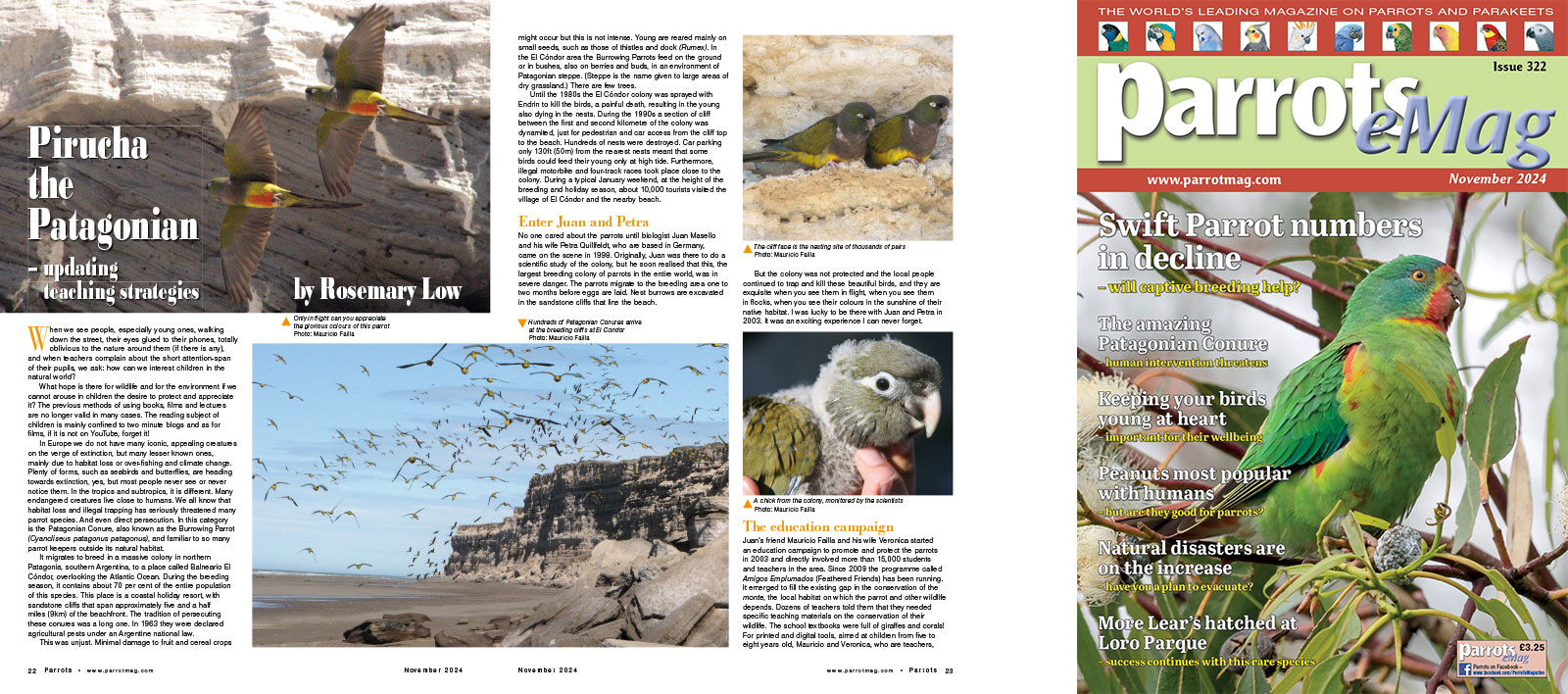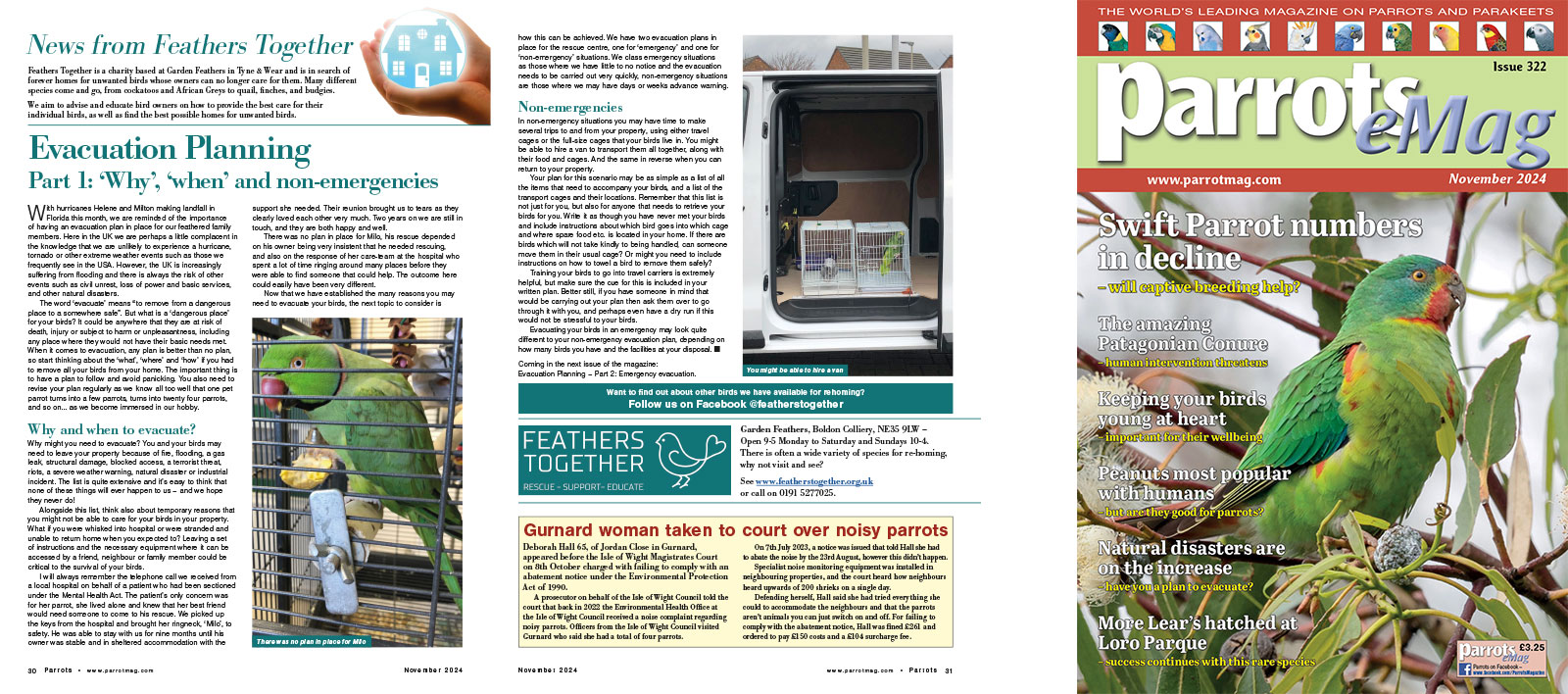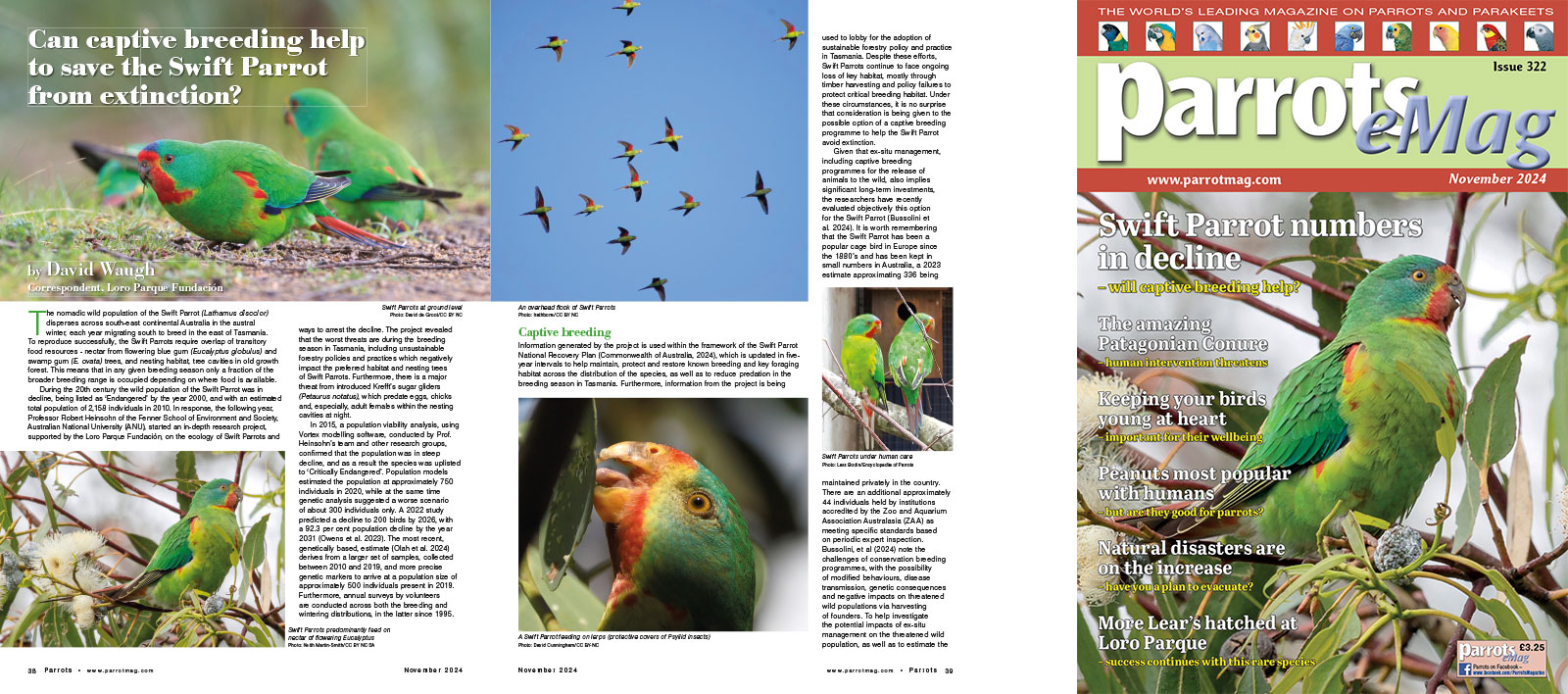
By David Vickery
I wonder how many people, like me, have seen clicker training as an excellent idea, but have given up and their clicker remains gathering dust in that special drawer used for collecting junk! Well, I picked up another clicker while at Think Parrots and was determined to see it through. After all, I thought, Stacey, my daughter who was close to the end of her studies resulting in an Animal Behaviour qualification, would help me out if I went wrong. So, here is my story of Clicker Training second time around. I have assumed you know the basic theory behind clicker training and positive reinforcement.
I picked two of my Macaws – Georgie a twelve-year-old Green Wing Macaw, and Millie a two-year-old Military Macaw, neither of which had come across clicker training before. Stacey told me to be sure from the outset just who was training who, and that was good advice.
Throughout the entire process there were a number of occasions when Stacey had to point out that they were training me! Being macaws they both love Walnuts, but I was reluctant to use walnuts for rewards due to the fat content, so I used Pine nuts which are known for putting on very little weight. If your bird won’t eat Pine nuts you will need to find a treat that will incentivise it, which needn’t be nuts. Small pieces of fruit or veg would arguably be better, but make sure you use small pieces, or they will spend most of their time eating and not being trained. Some birds aren’t food motivated, so rewards can be verbal – an enthusiastic ‘good girl’ or touch – for example a cuddle, or play – a simple toy for them. What’s important is that it works for you and your bird.
Get your copy now

By Rosemary Low
When we see people, especially young ones, walking down the street, their eyes glued to their phones, totally oblivious to the nature around them (if there is any), and when teachers complain about the short attention-span of their pupils, we ask: how can we interest children in the natural world?
What hope is there for wildlife and for the environment if we cannot arouse in children the desire to protect and appreciate it? The previous methods of using books, films and lectures are no longer valid in many cases. The reading subject of children is mainly confined to two minute blogs and as for films, if it is not on YouTube, forget it!
In Europe we do not have many iconic, appealing creatures on the verge of extinction, but many lesser known ones, mainly due to habitat loss or over-fishing and climate change. Plenty of forms, such as seabirds and butterflies, are heading towards extinction, yes, but most people never see or never notice them. In the tropics and subtropics, it is different. Many endangered creatures live close to humans. We all know that habitat loss and illegal trapping has seriously threatened many parrot species. And even direct persecution. In this category is the Patagonian Conure, also known as the Burrowing Parrot (Cyanoliseus patagonus patagonus), and familiar to so many parrot keepers outside its natural habitat.
Get your copy now

By Feathers Together
With hurricanes Helene and Milton making landfall in Florida this month, we are reminded of the importance of having an evacuation plan in place for our feathered family members. Here in the UK we are perhaps a little complacent in the knowledge that we are unlikely to experience a hurricane, tornado or other extreme weather events such as those we frequently see in the USA. However, the UK is increasingly suffering from flooding and there is always the risk of other events such as civil unrest, loss of power and basic services, and other natural disasters.
The word ‘evacuate’ means “to remove from a dangerous place to a somewhere safe”. But what is a ‘dangerous place’ for your birds? It could be anywhere that they are at risk of death, injury or subject to harm or unpleasantness, including any place where they would not have their basic needs met. When it comes to evacuation, any plan is better than no plan, so start thinking about the ‘what’, ‘where’ and ‘how’ if you had to remove all your birds from your home. The important thing is to have a plan to follow and avoid panicking. You also need to revise your plan regularly as we know all too well that one pet parrot turns into a few parrots, turns into twenty four parrots, and so on… as we become immersed in our hobby.
Why might you need to evacuate? You and your birds may need to leave your property because of fire, flooding, a gas leak, structural damage, blocked access, a terrorist threat, riots, a severe weather warning, natural disaster or industrial incident. The list is quite extensive and it’s easy to think that none of these things will ever happen to us – and we hope they never do!
Get your copy now

By David Waugh, Correspondent, Loro Parque Fundación
The nomadic wild population of the Swift Parrot (Lathamus discolor) disperses across south-east continental Australia in the austral winter, each year migrating south to breed in the east of Tasmania. To reproduce successfully, the Swift Parrots require overlap of transitory food resources - nectar from flowering blue gum (Eucalyptus globulus) and swamp gum (E. ovata) trees, and nesting habitat, tree cavities in old growth forest. This means that in any given breeding season only a fraction of the broader breeding range is occupied depending on where food is available.
During the 20th century the wild population of the Swift Parrot was in decline, being listed as ‘Endangered’ by the year 2000, and with an estimated total population of 2,158 individuals in 2010. In response, the following year, Professor Robert Heinsohn of the Fenner School of Environment and Society, Australian National University (ANU), started an in-depth research project, supported by the Loro Parque Fundación, on the ecology of Swift Parrots and ways to arrest the decline. The project revealed that the worst threats are during the breeding season in Tasmania, including unsustainable forestry policies and practices which negatively impact the preferred habitat and nesting trees of Swift Parrots. Furthermore, there is a major threat from introduced Krefft’s sugar gliders (Petaurus notatus), which predate eggs, chicks and, especially, adult females within the nesting cavities at night.
In 2015, a population viability analysis, using Vortex modelling software, conducted by Prof. Heinsohn’s team and other research groups, confirmed that the population was in steep decline, and as a result the species was uplisted to ‘Critically Endangered’. Population models estimated the population at approximately 750 individuals in 2020, while at the same time genetic analysis suggested a worse scenario of about 300 individuals only. A 2022 study predicted a decline to 200 birds by 2026, with a 92.3 per cent population decline by the year 2031 (Owens et al. 2023). The most recent, genetically based, estimate (Olah et al. 2024) derives from a larger set of samples, collected between 2010 and 2019, and more precise genetic markers to arrive at a population size of approximately 500 individuals present in 2019. Furthermore, annual surveys by volunteers are conducted across both the breeding and wintering distributions, in the latter since 1995.
Get your copy now




